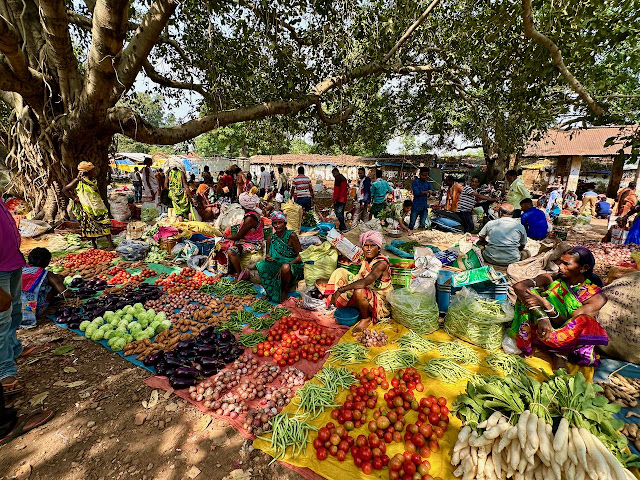 |
| Peterhof is famous for its fountains and fine views over the Baltic Sea |
Peterhof (Petrodvorets) - former summer palace of Peter the Great - is one of the most popular day-trip destinations for St Petersburg visitors. Although what you see today is mostly a reconstruction, since both palace and grounds were major casualties of WWII, firstly at the hands of the German army stationed here, who did considerable damage to the palace, but additionally and ironically by Stalin, who was determined Hitler wouldn't celebrate New Year's Eve there in 1941 and repeatedly bombed the site to prevent this happening.
 |
| The Cascade Fountain at Peterhof, with 200 gilded statues and ornamental features, overlooks the Baltic Sea |
Today the reconstructed Peterhof is one of the most impressive gardens in Russia with its memorable collection of fountains and fine views over the Baltic Sea. The estate is actually a series of palaces and gardens, often described as the 'Russian Versailles'. The gardens are Baroque in style and were designed by a pupil of Le Notre - Jean-Baptiste Le Blond - for Peter the Great, who not only admired Versailles, but who, as creator of the Russian Navy, also loved to be near the sea.
 |
| The landscape at Peterhof is mainly greenery, to overcome the harsh Russian winters |
The Cascade Fountain (top) leads from the palace to the lower gardens, flanked at both sides by waterfall steps, features more than 200 gilded statues and ornaments. The Grand Cascade is modelled on one designed for Louis XIV at his Palace de Marly, which is also memorialised at Peterhof as a smaller palace at the far end of the Lower Gardens. Don't miss it if you visit, because this is where you will find the best restaurant and fewer crowds.
 |
| The Sun Fountain at Peterhof constantly rotates to catch the sun's rays |
Perhaps the greatest technological achievement of Peterhof is that all the fountains operate without the use of pumps. Water is supplied from natural springs and collects in reservoirs in the Upper Gardens. And it's the elevation difference that creates the pressure to drive the fountains in the Lower Gardens, including the Grand Cascade. These fountains range from the remarkable Sun Fountain (above) that rotates and catches the suns rays to give a dazzling rainbow, to a number of trick fountains that soak unsuspecting visitors who get too close to them.
 |
| Spring flowers are a feature of the gardens in May |
It was Catherine the Great who oversaw the
creation of the first landscape garden at Peterhof – and created both an English Palace
and an English Park – designed jointly by Scottish landscaper, James Meaders, a disciple of Capability Brown, working with the Italian architect Giacomo Quarenghi, who oversaw the building of the
once celebrated Palace, considered to be one of the great examples of
Russian classicism, although sadly, this too was destroyed during WWII. But visit Peterhof today, and you will be amazed by the effort that has gone into rebuilding the complex.
What had to be considered here when designing and landscaping the gardens for Catherine, were the inclement conditions of
the Russian climate, which means that for nearly half the year the ground is
covered in snow and the temperatures are well below freezing. This is why the
bulk of the landscape is greenery, but with displays of flowers throughout the
spring and summer months.
 |
| The Marly Palace at Peterhof - well worth walking the extra distance to see |
In springtime, the formal garden areas in the lower park are filled with daffodils and tulips, but these are replaced later in the season with other flowers and, although the planting is somewhat military with tulips placed in soldier-like lines and single blocks of colour, you can see why the gardens are so popular with both tourists and locals. The emphasis here is on the water, fountains and greenery because of the extremely harsh Russian climate in winter.

Peterhof is undoubtedly one of the most popular attractions on any tourist itinerary to St Petersburg, and is served by a hydrofoil service from the city, as well as numerous coach tours, so the secret is either to get there early ahead of the crowds, or linger late in the afternoon, when the hordes have departed. And definitely avoid weekends because it is also a favourite with locals. Check the official website before visiting as opening hours vary according to the time of year.

It is also worth remembering that you cannot buy a single ticket to visit the entire estate. The Upper Gardens are free, and admission to the Lower Gardens is just 500 Russian roubles, but each palace and building within the complex requires a separate entrance ticket - there is not a single pass system, so try and plan ahead and buy all tickets that you need at the main entrance gates to avoid queueing at each new attraction when you arrive there. In high summer, during the 'White Night' period the gardens are open until 20.00 and early evening is a good time to visit to avoid the crowds.
Click here to see the Summer Gardens in St Petersburg.











Comments
Post a Comment